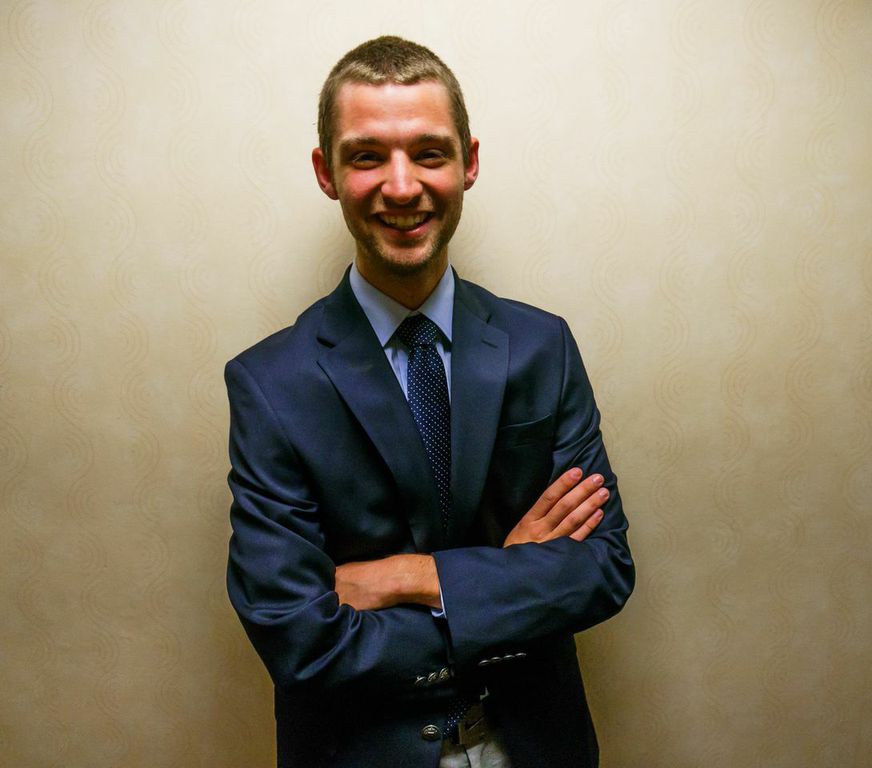Candidate Brian Ward
Why do you want this position?
“When I came to CWRU I didn’t know what the Student Activities Fee (SAF) was. I assumed that USG finance just meant internal budgeting. Obviously through my experiences since then, I’ve realized that USG finances have a much bigger scope than that. I was on the executive board for the ultimate frisbee team, so I’ve realized how important USG finance is for student organizations on campus. Funding and money is what allows students to pursue their passions on campus in a lot of way. There are other resources in addition to money, but that’s a huge aspect of it.”
How will you work to ensure that all organizations have an opportunity to be adequately funded?
“One of my main priorities in this position is to increase student input into how we create our funding guidelines. I’ve seen a lot of requests, I know generally what students need. Sometimes we can’t fund them all the way or we get requests that seem absurd or don’t follow the guidelines. Getting more student input into how we create our funding guidelines is going to help that. I want to increase that input through category specific forums. Earlier this semester, we had one with just the cultural groups. We learned a lot from them and that’s partly how we shaped our funding guidelines for next semester. Doing that for all of our different categories will make it more applicable to all student groups. Also I want to create more funding guidelines that are more category specific. It’s hard to encompass all the needs of all your students with just one piece of paper. I don’t want to sound like we’re having more stringent guidelines, but more guidelines that can more adequately fit the needs of our students.”
As a member of the Student Executive Council (SEC), what role do you see yourself taking?
“As vice president of finance, I am an advocate for the student orgs. I want to make sure that our allocation adequately represents what the needs of the student orgs are. Part of doing all this research and background for our funding history is to get more quantitative statistics to present to the SEC, which I think will give us more data to back up assertions that we need more money to fund our student groups. I’m not saying we need a huge increase, I’m not even sure how much of an increase would be necessary. I know next semester, the SAF pot is higher with more students, so we didn’t need an increase. But we add 15 to 20 new organizations every year, so as we add new organizations we need more funding to fund them. Long story short, I sit on SEC as a directly elected official so I see myself as a voice for the students on the board.”
What is the thing you are most proud of in your time in USG so far?
“I think my time as a treasurer has taught me a lot of things. I’m really proud to fix the tiny issues for students that on a grand scale, like making sure they get their $40 reimbursement. It might seem minuscule, but interacting directly with the students and seeing how directly our system impacts them and doing my part to make sure that that is a good experience for them is something that I’m really proud of. One thing that instituting OrgSync has done is made our process a lot faster for students, especially this semester, now that we’ve worked out the kinks. It only takes two to three days to do reimbursements, and it’s all online and paperless, which really impacts students.”
You mention in your letter of intent that you plan on doing a “thorough analysis of USG’s funding and request history.” How do you plan on doing this, and what is your end goal for the project?
“I mostly want to look in the last four to five years, because those are the groups that we still have on campus, and we’ll have similar numbers for how many groups and how large our budget was. As far as gathering specifics, I want to look at how many events students were funded. I think people sometimes don’t realize that a lack of funding to USG means sometimes a student organization only gets two or three events per semester. If people can get a qualitative and quantitative view of that and see what the direct impact funding cuts or increases has on how we’re able to fund groups, I think that’s really important. Just us saying we have $200,000 for mass funding instead of $230,000 for mass funding, that doesn’t tell anyone what that means for student organizations. Being able to tell everyone what an increase will do will be really helpful.”


